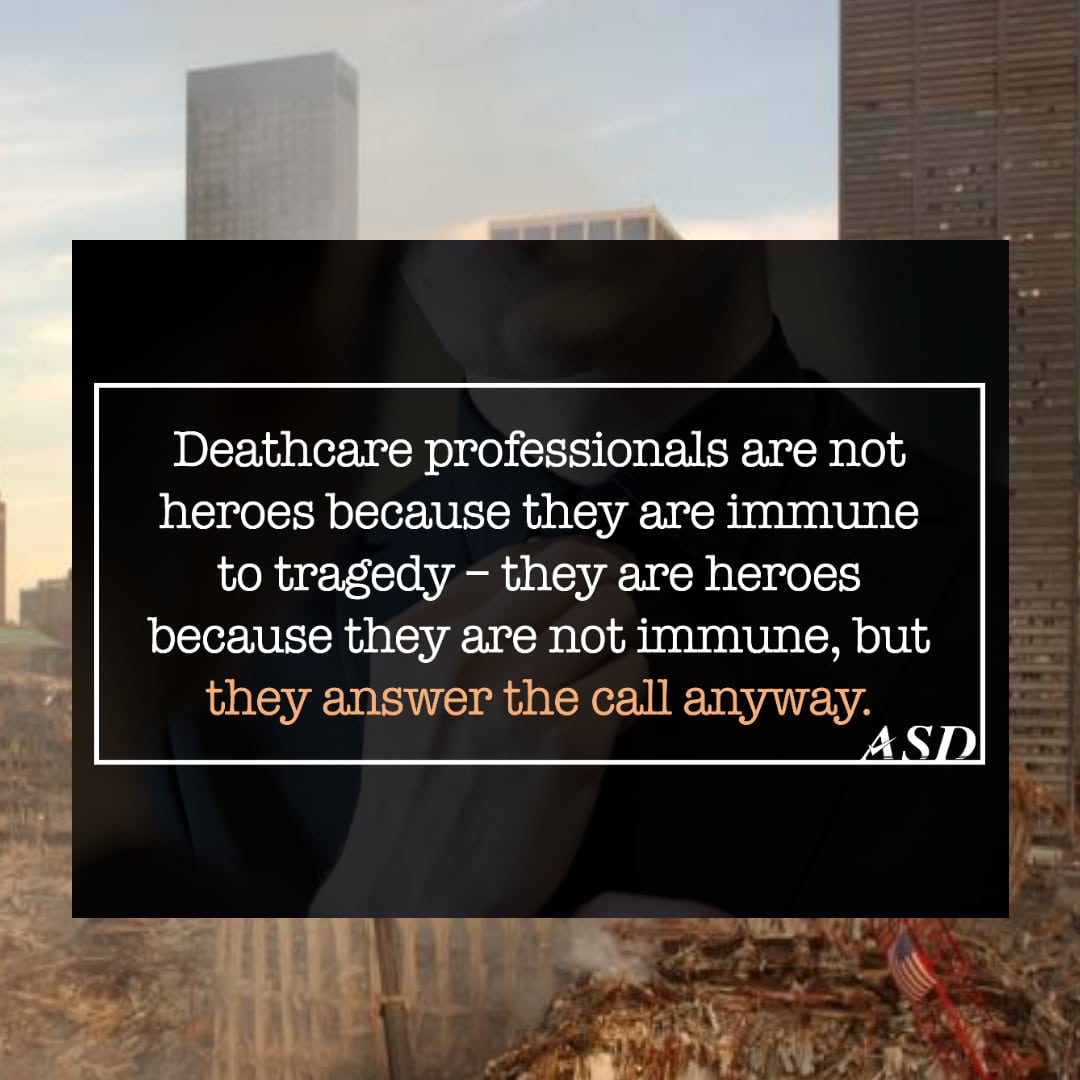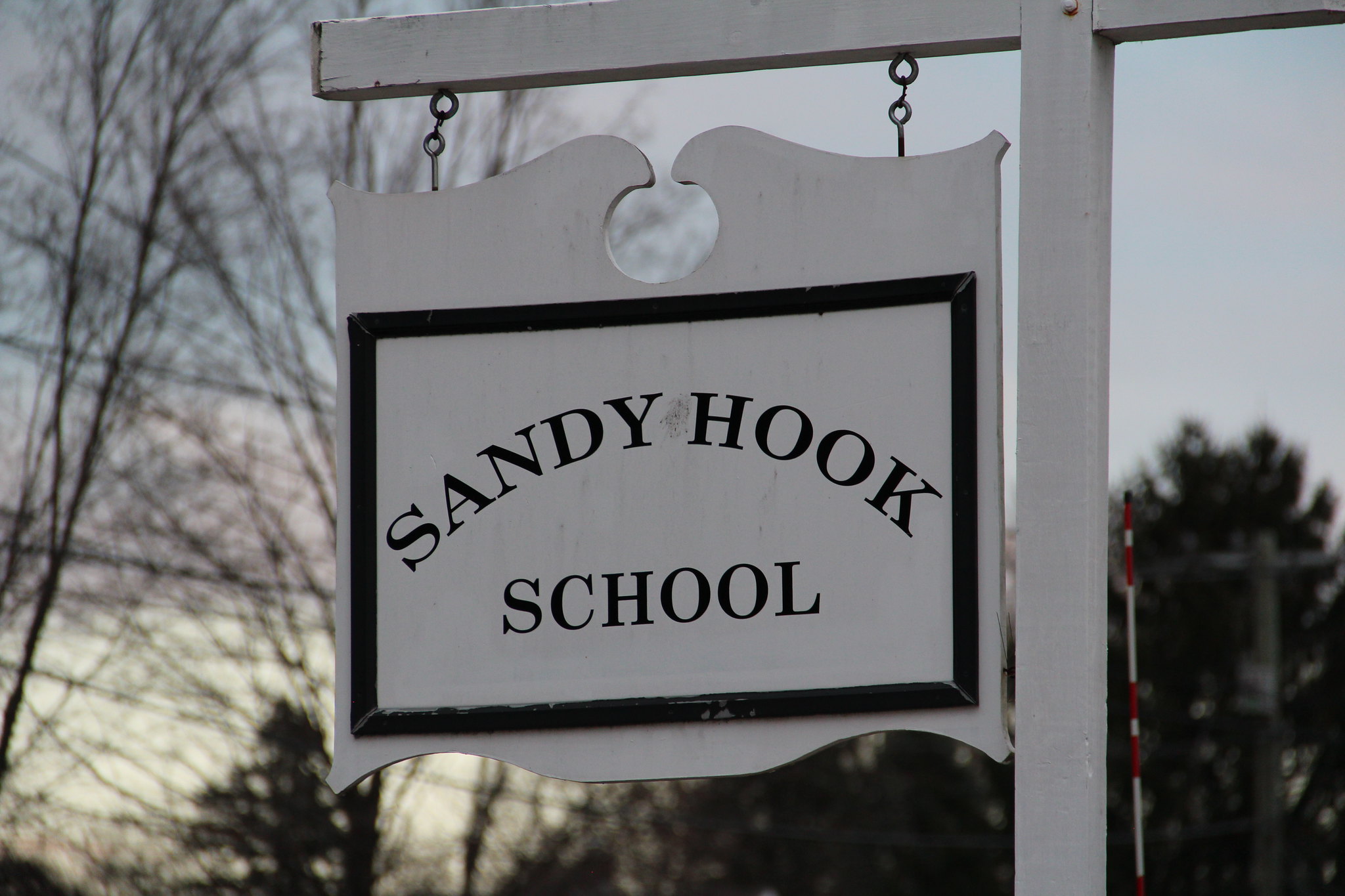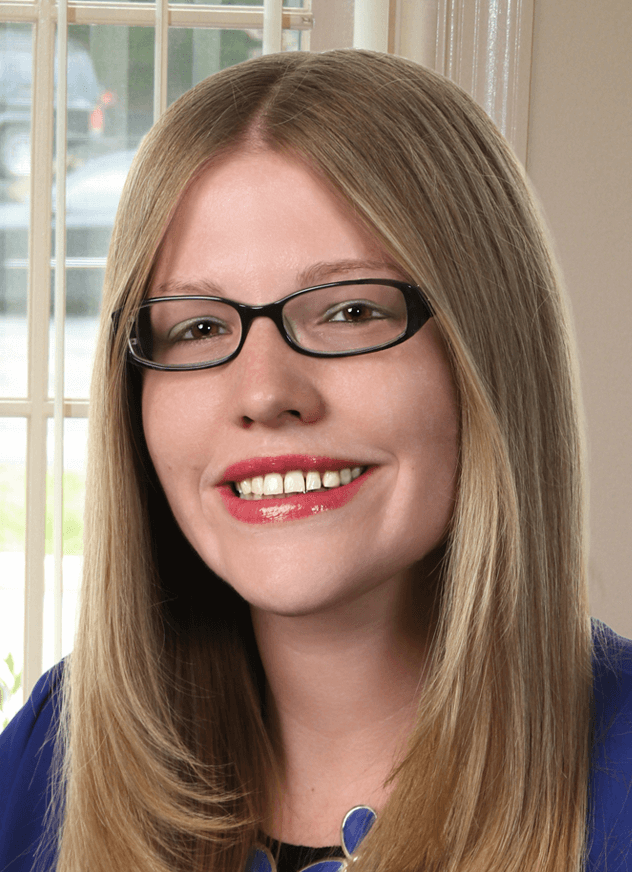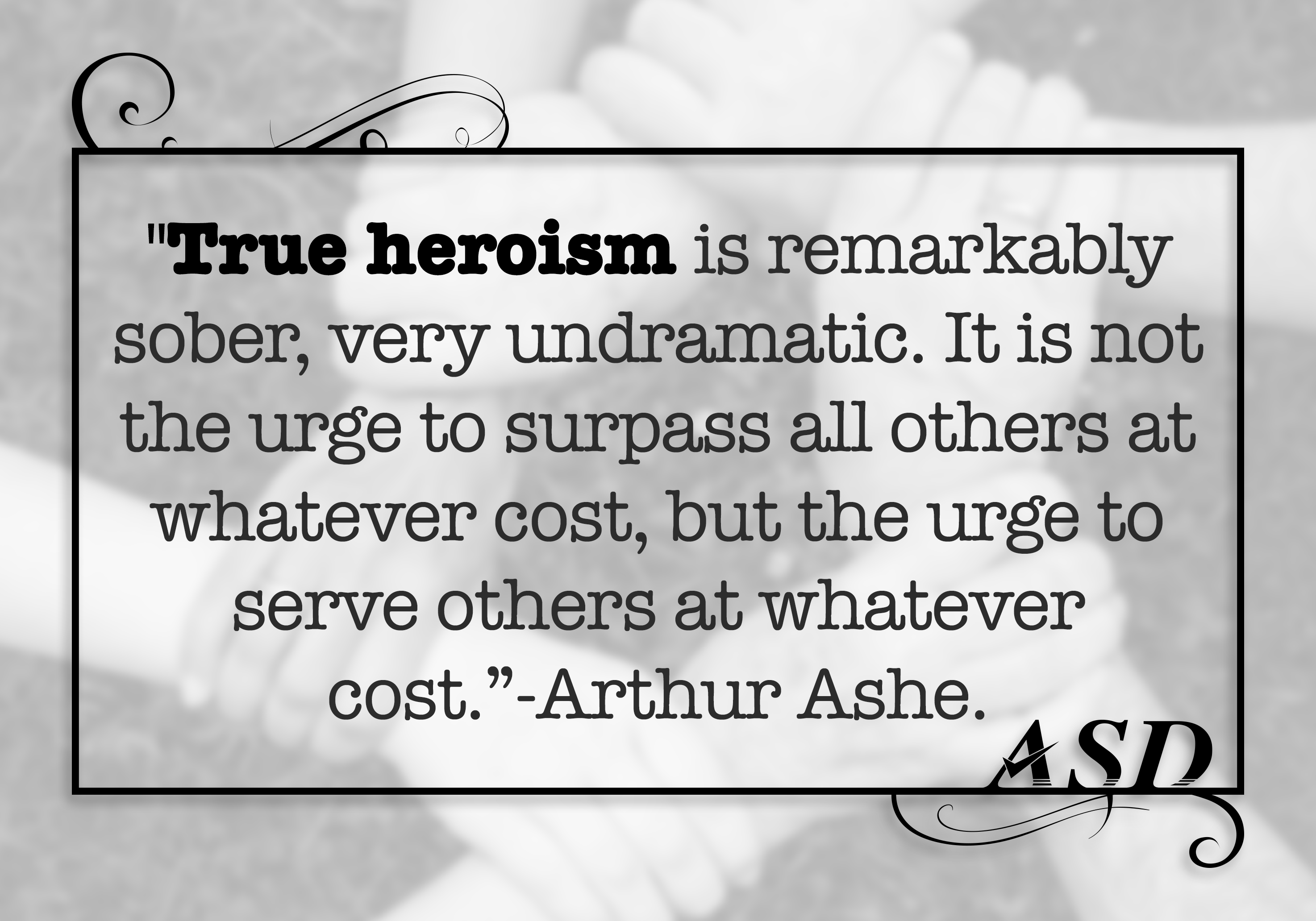
For almost a year now, I have had a rough outline of this blog in a saved file on my computer. Every time I have attempted to write it, I found myself at a standstill as I looked over the outline. That familiar feeling of dread would wash over me as I tried to steel myself to tackling such grim subject matter, only to give into the voice in my head that said, “Let’s just write about something else instead.”
This time, when I opened up the document, it was with a stronger resolve and the date March 11th firmly in mind. Knowing that National Funeral Directors and Morticians Appreciation Day was approaching, I wanted to confront a subject that truly captures why we, as a society, should feel gratitude for the work and sacrifice of deathcare professionals. When I felt my usual apprehension approaching, a thought occurred to me that had not before. “If I am so deeply dreading just writing about these horrific mass casualty events, imagine what it must have been like to come face to face with them?”
There is no doubt in my mind that the men and women who recovered bodies after 9/11 or performed autopsies on children after school shootings felt that same type of dread all humans feel when faced with a foreboding task. That instinct to run away from suffering is in every one of us. Yet, they walked into those classrooms and sorted through that rubble when the vast majority of people would not have the courage or resolve to even put themselves into such a situation. I know I myself do not have it, and being able to recognize that truth is why I feel so grateful for those brave souls who stepped up during our nation’s darkest hours.
Make no mistake about it, it is a sacrifice that deathcare professionals make for all of us. They surrender their mental wellbeing and risk post-traumatic stress so that others don’t have to see the things that they see. I’ve been writing about morticians for more than 10 years now and I’ve seen the scenario played out so many times just in my lifetime, and that does not even include the previous generations of funeral professionals throughout history. Whether it is a pandemic, a natural disaster, a mass shooting or an attack from a foreign invader, society relies upon these service-hearted individuals to ensure the victims are tended to in a respectful and dignified manner.
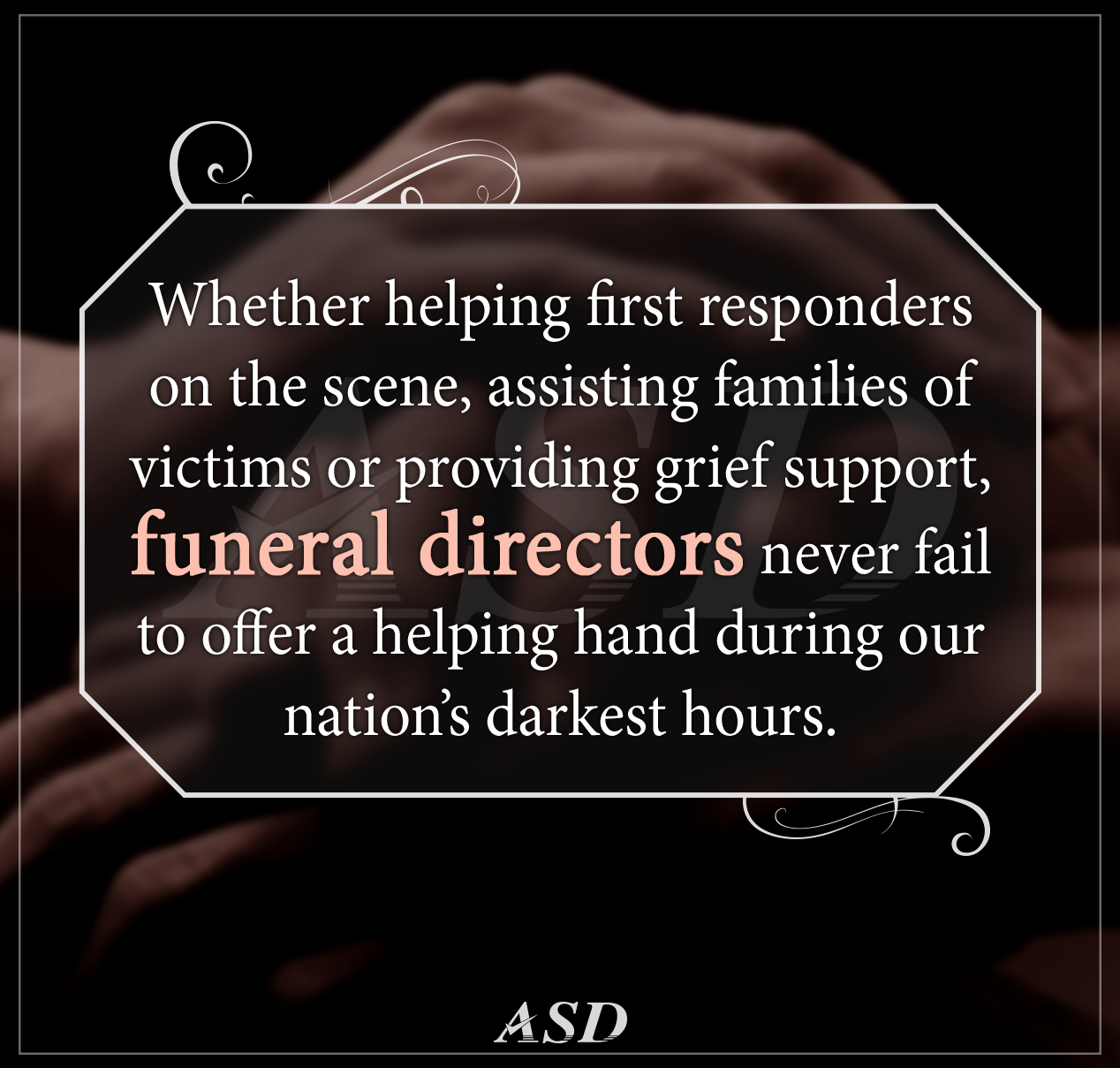
Here are 8 Stirring Examples of Heroism in the Funeral Profession
1. September 11, 2001
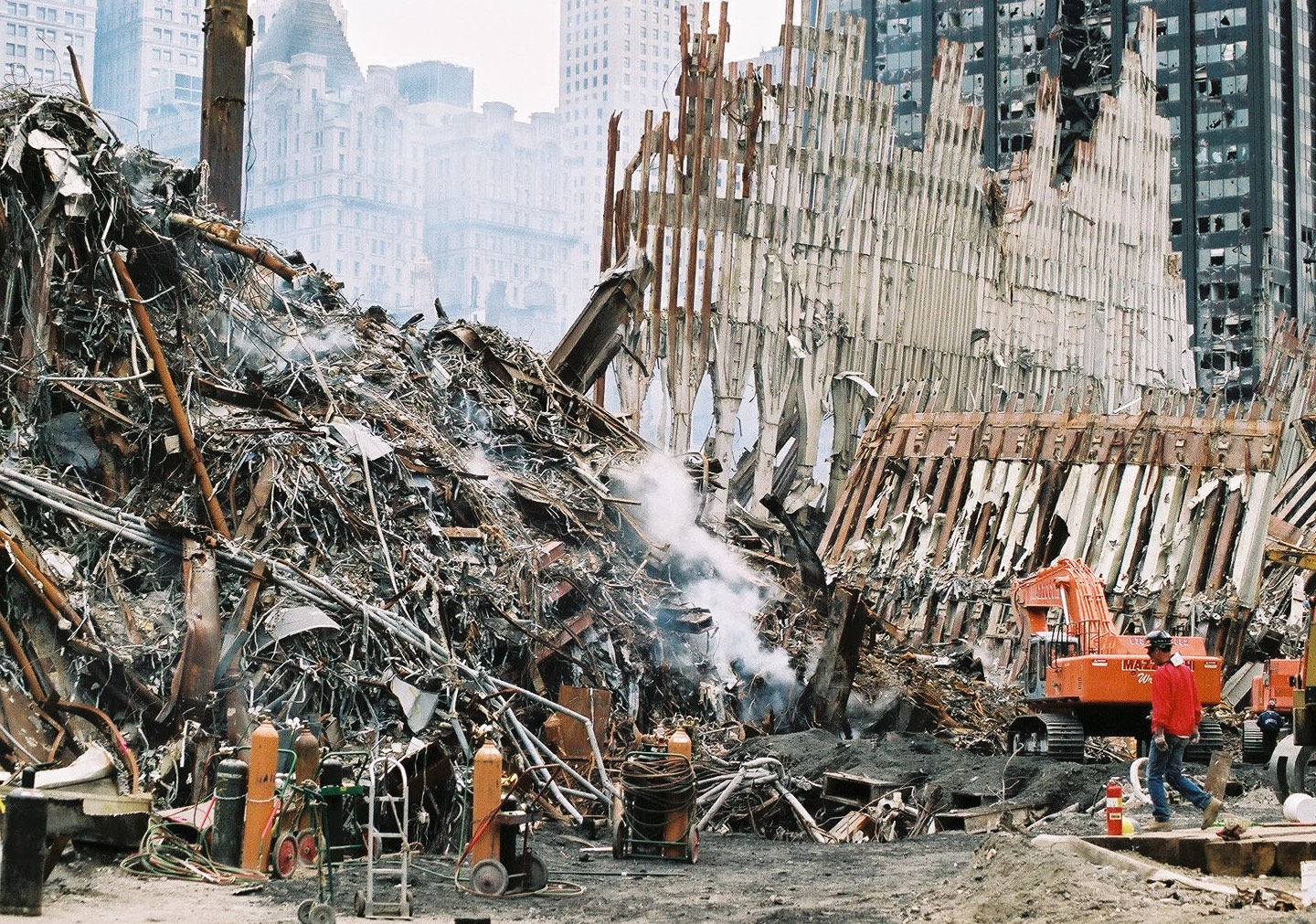
There are so many different examples of deathcare professionals exhibiting courage and heroism in the aftermath of the attacks on September 11th, 2001. On this date, our country faced a mass casualty event that we had never seen on this scale before. No one knew what to expect, but they came anyway. There were the Disaster Mortuary Operations Response Team (DMORT) volunteers, many of whom were funeral directors, who didn’t hesitate to offer their assistance and expertise despite being faced with unimaginable horror. People like mortician, Peter Teahen, who flew to NYC from Cedar Rapids, IA immediately after 9/11 to assist with the recovery and identification of the victims.
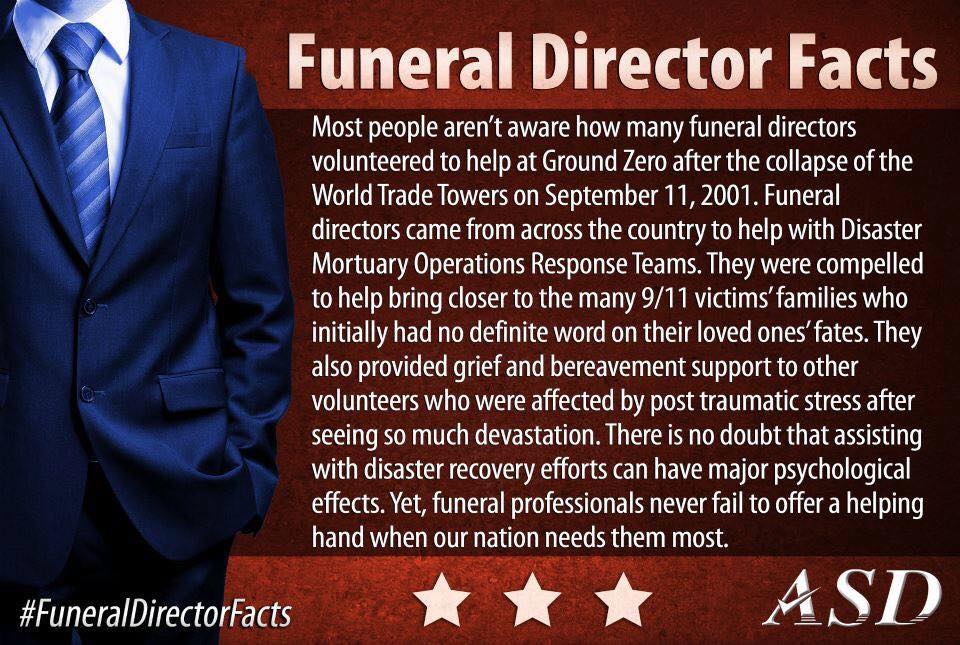
Nowadays, people often forget that the recovery efforts at ground zero stretched on for months afterward. Volunteers like Funeral Director James Oulette don’t forget. He spent Christmas 2001 and New Year’s Day 2002 away from his family in Maine to offer his assistance at ground zero after the NFDA put out a call for help. Then, there is the little-known story of Wally Miller, a coroner and funeral director who lived near the United 93 crash site in western Pennsylvania and was instrumental in helping to bring closure to the families of the victims.
There were also the New York City Funeral Directors, many of whom lost loved ones of their own, who were called to serve so many grieving families in the aftermath of the attacks. It is hard to imagine what it must have been like for those morticians to coordinate funerals for the thousands of World Trade Center victims and for the city’s first responders who answered the call that day. There were so many families with unanswered questions who were unable to recover their loved one’s remains, which made this work all the more difficult. Even to this day, many funeral directors in NYC who lived through 9/11 still do not like talking about this chapter in their past.
2. The Coronavirus Pandemic
It is difficult to put into words how much the deathcare profession as a whole gave back to humanity throughout the pandemic. As we approach the three-year anniversary of when the first wave of the virus hit our shores, we are flooded with memories of funeral directors putting the needs of others ahead of their own and bravely stepping up in so many different ways.
The heroism of funeral professionals during the COVID-19 Pandemic was on full display every time they…
- Put themselves at risk of contracting the virus to pick up and embalm bodies or to meet with a family.
- Fought with government agencies to get priority access to basic PPE equipment.
- Went into crowded morgues and trailers filled with deceased people to handle removals.
- Enforced gathering restrictions and social distancing rules even though it went against every natural instinct.
- Waited in lines for hours at backlogged cemeteries and crematories to ensure a deceased person’s final disposition was handled properly.
- Answered a call from a family in need despite having to store bodies in air-conditioned chapel rooms due to lack of space.
- Drove for many hours outside of the state to find a crematory that did not have an enormous backlog.
- Resisted the natural urge to offer comfort to families with an embrace or handshake.
- Fought with government agencies (again) to get priority access to vaccines.
- Provided new options to help families, such as drive-through funerals, livestreamed services, and virtual arrangements.
“Every morning when I get up to go work, I’m scared. I’m scared for my health and for my employees. As soon as I get through the front door, my focus shifts and I don’t have time to be scared anymore. It shifts towards families that need our services, the families that entrusted us with their loved one.”
3. Sandy Hook Elementary School Shooting
It’s been nearly 10 years, but I can still remember the look on Funeral Director Pasquale Folino’s face when he spoke at the 2013 NFDA Convention about being one of the volunteers who came to Newton, CT after the Sandy Hook Elementary School Shooting. You could see, even from a distance, that he was haunted by the experience. Pasquale was one of more than 160 funeral directors who answered a call for help from the Connecticut Funeral Directors Association after 26 people, including 20 young children, were killed by a gunman on December 14, 2012.
“Yes, I’m a mortician. But we’re human beings. When you see a child from a mass shooting, it really hits home,” Folino said at the time. “We do what we can do to take care of the families. We’ll deal with our own emotional needs later.”
Several years before the tragedy, the CFDA created a disaster contingency plan to mobilize funeral directors in their state in the event of an emergency. Within several hours of learning about the events at Sandy Hook, Executive Director John Cascio sent out a call to action to all CFDA members asking for assistance in response to the tragedy. Hundreds of Connecticut funeral directors responded, and the association worked to assign volunteer teams, assemble supplies and inform the media. The CFDA also immediately set up a fund for the families of the victims, resulting in more than $92,000 for the 26 families.
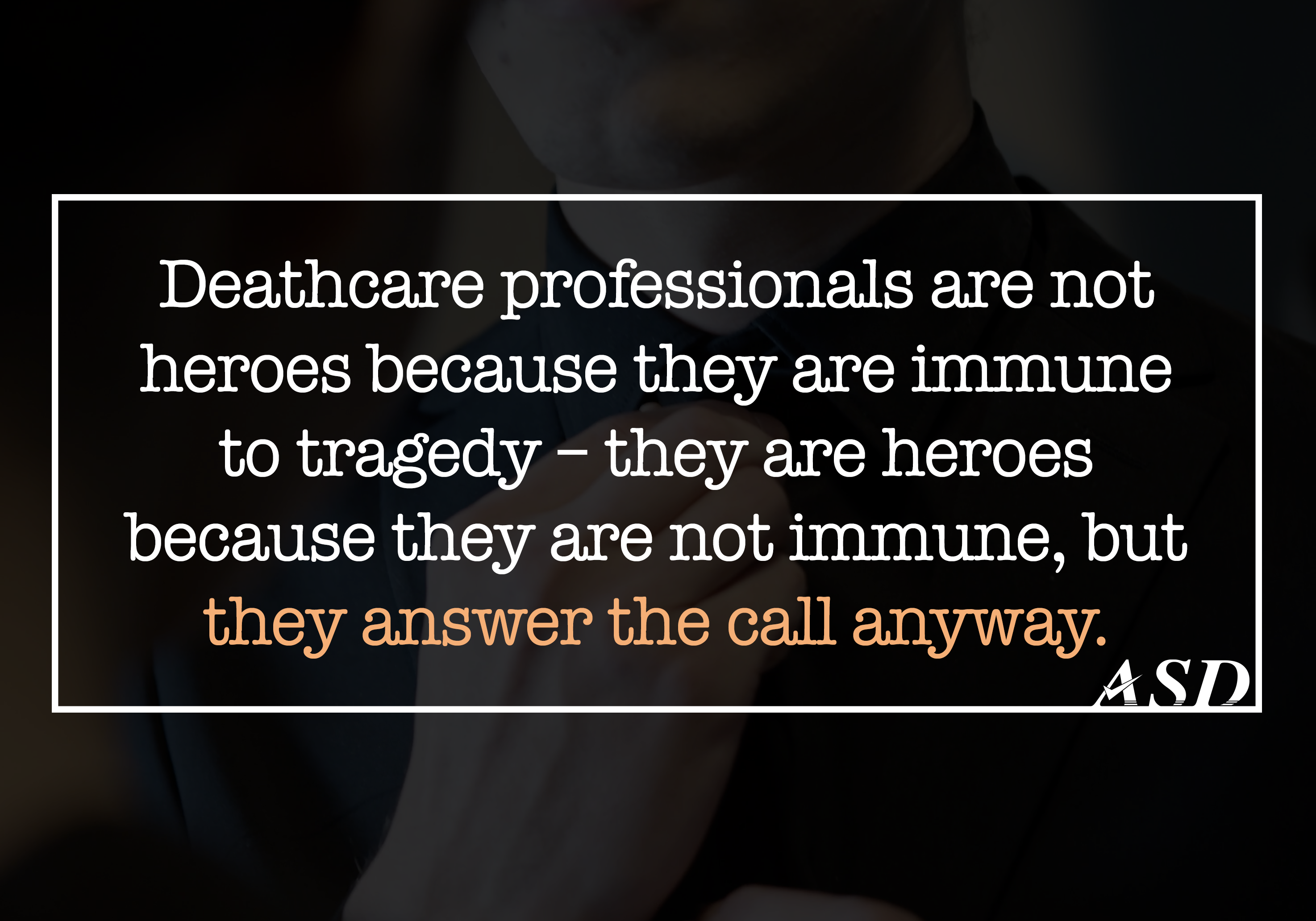
It is difficult to think too long about what those funeral directors faced having to witness the aftermath of such a tragic event. There is no class you take in mortuary science school that can prepare you for the sight of slain children. For those that might operate under the assumption that morticians have some superhuman ability that makes them insusceptible to these horrors, you are mistaken. One look at the face of Pasquale Folino talking about his experience in Newtown would disabuse you of any such notions. Funeral directors are not heroes because they are immune to tragedy. They are heroes because they are not immune, but they go in anyway.
4. Hurricane Sandy
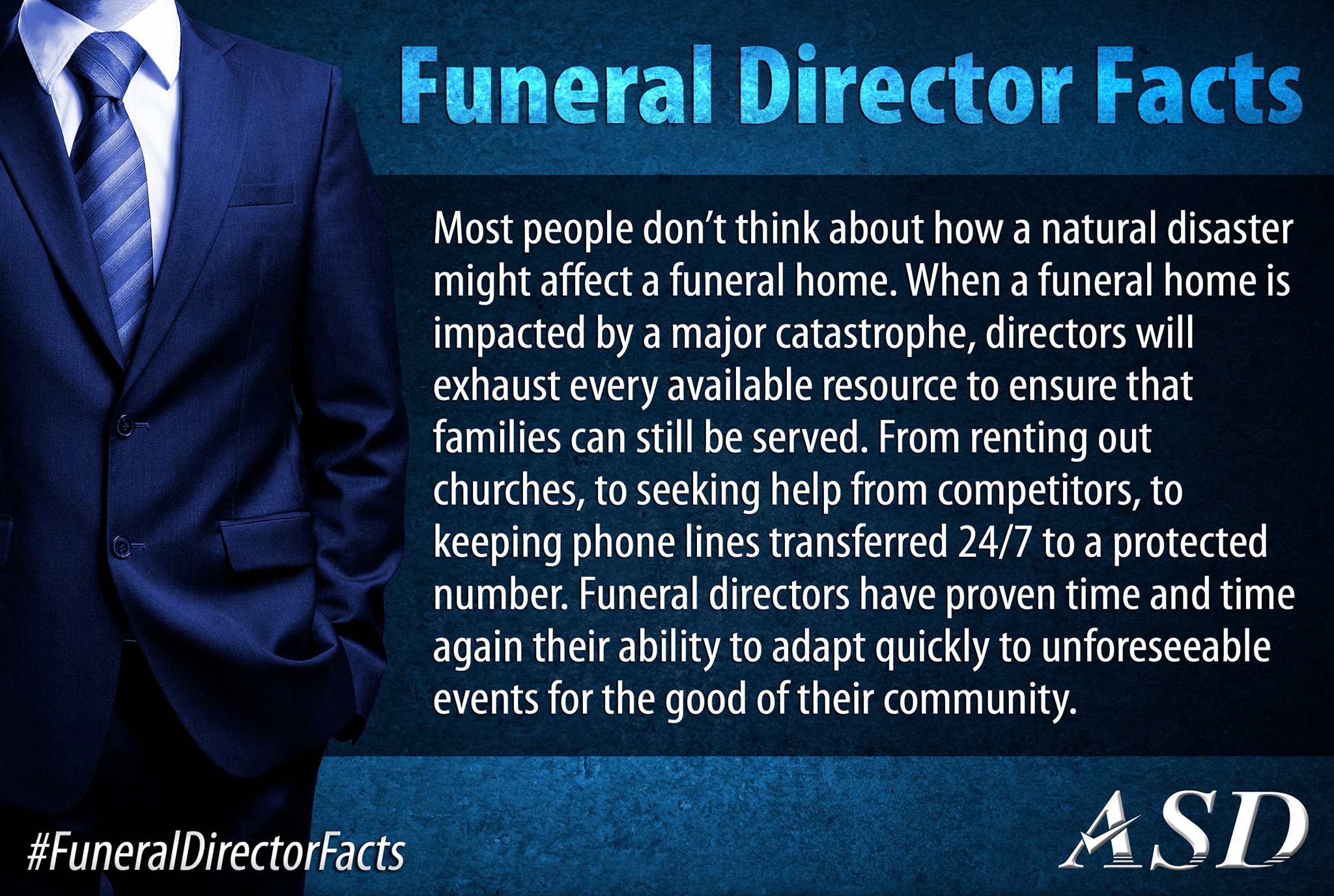
Hurricane Sandy was a devastating storm that caused widespread damage to states along the east coast in 2012. Funeral homes in the impacted areas were hit hard by the storm, with many experiencing significant damage to their facilities, equipment, and supplies. In addition to physical damage, power outages, transportation disruptions, and supply shortages also plagued funeral homes in the weeks after the storm. Some funeral homes were forced to close temporarily, while others operated with limited capacity, as they dealt with the aftermath of the storm.
Despite the many challenges, funeral homes that were affected showed remarkable resilience and dedication in serving their communities during and after the storm. One standout example of funeral professionals going above and beyond to help others is the John Vincent Scalia Funeral Home on Staten Island, NY. The funeral home provided shelter to hundreds of people in their community who had been displaced by the widespread flooding the storm caused. They also collected donations and provided funerals for the victims at no cost to the families. In addition, the funeral home received an outpouring of support from other funeral homes across the country who wanted to help in any way they could.
This podcast about the role of philanthropy in the funeral home and how Hurricane Sandy brought funeral directors, vendors and other funeral professionals together in an effort to help those less fortunate is just as relevant today as it was ten years ago.
“We got boxes coming from everywhere. I’m talking huge boxes and stuff that these funeral homes collected on their own from their neighbors,” shared Funeral Director Kevin Moran of John Vincent Scalia Home for Funerals. “The generosity and the outpouring was heartwarming. It reiterates the goodness of people especially the goodness of people in this profession.”
5. The 1918 Spanish Flu Pandemic
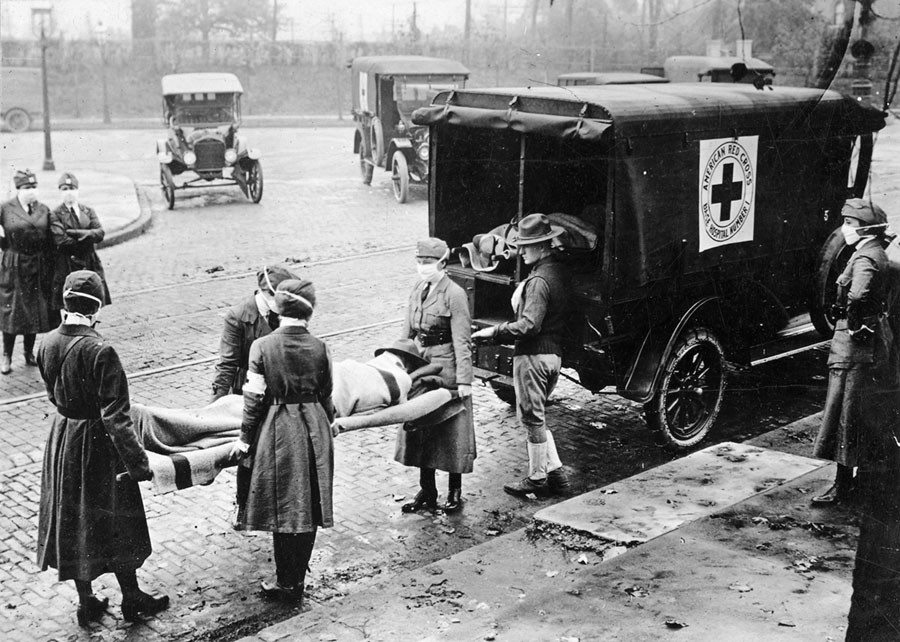
People often forget that COVID-19 was not the first time in our nation’s history that deathcare workers were tested by a deadly pandemic. The similarities between what the funeral profession endured in 1918 and 2020 are considerable. Stories of funeral homes running out of space and struggling to keep pace with the volume of deaths were common during both pandemics. It’s also important to note that during the Spanish Flu pandemic, people were also prohibited from attending public gathering due to restrictions imposed at the time. This led to the same kind of complicated grief that families who lost loved ones to during COVID experienced after not being able to hold funerals.
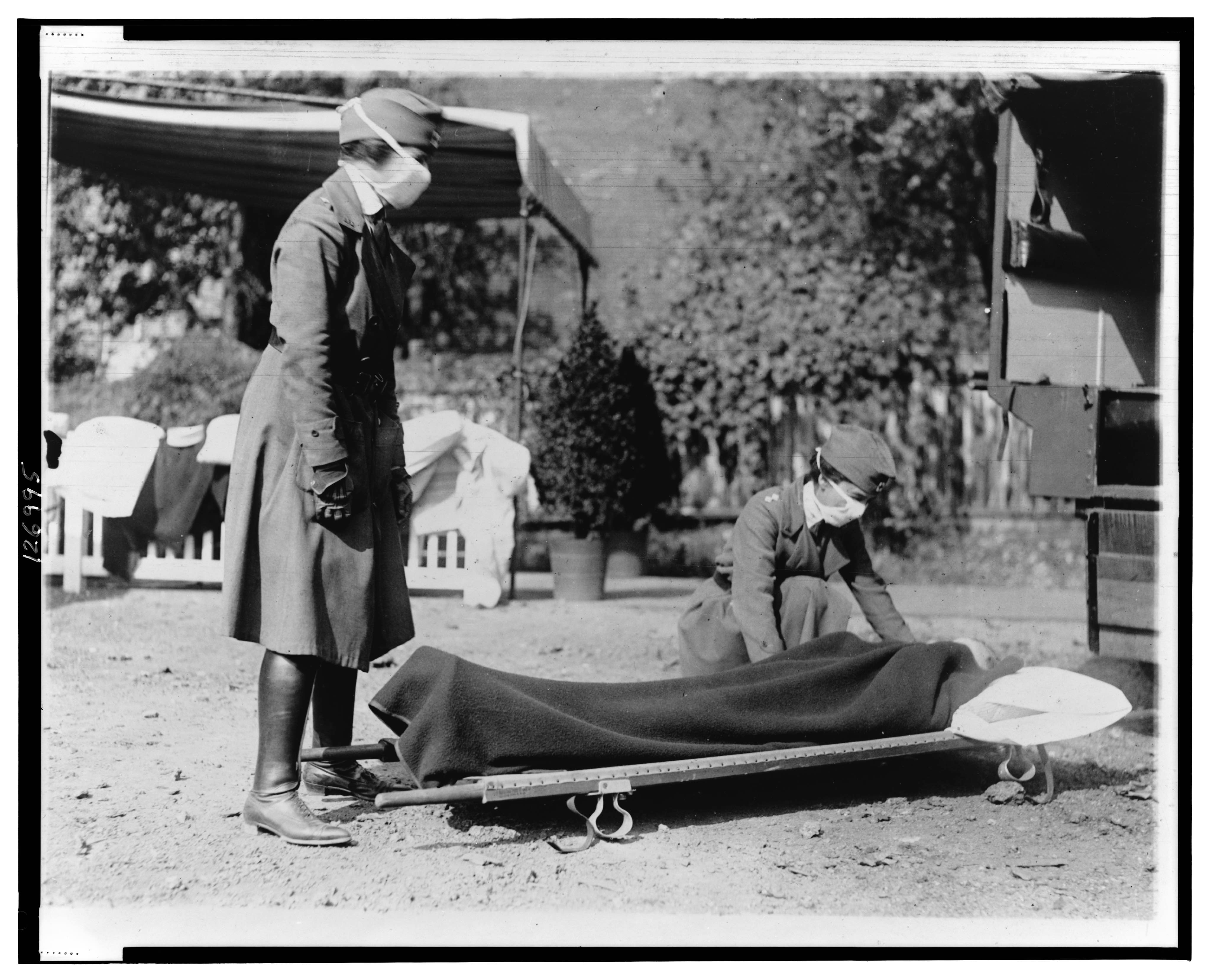
One major distinction between the Spanish Flu and COVID is that, in the absence of proper refrigeration and the regulations that are in place today, the scale of death that had occurred was much more visible to the public in 1918 than it was in 2020. Some cities at that time came to resemble the plague-infested middle ages, with wagons patrolling the city to pick up decomposing bodies from homes. As horrible as these scenes must have been, there is a trade-off to pushing death out of sight. It contributes to our society’s overall ignorance surrounding the important work of morticians and this has real-world consequences on their mental health. What both of these pandemics have proven is that funeral professionals will answer the call when they are needed most, even when faced with unprecedented challenges.
6. The New London School Explosion
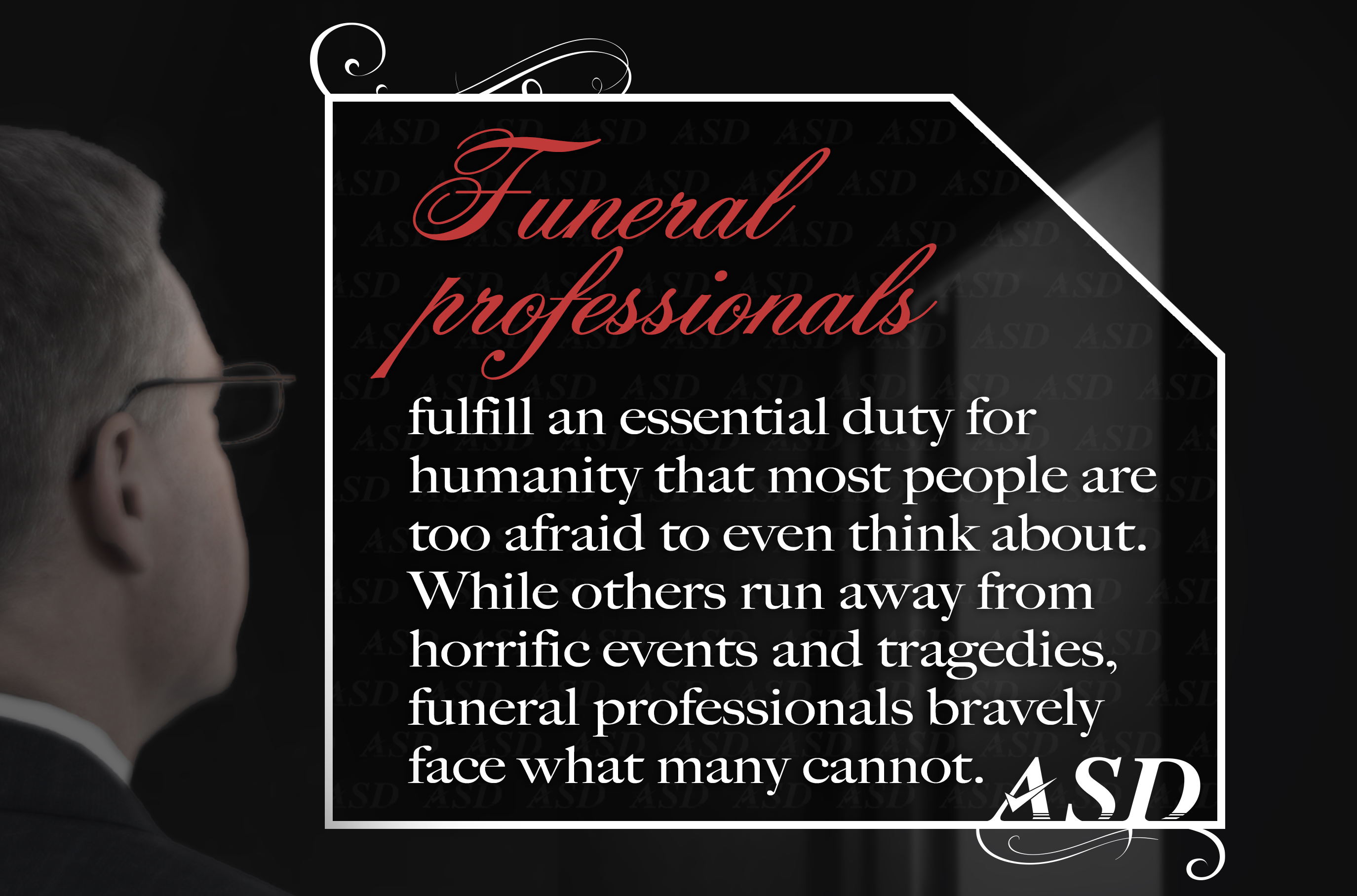
Despite being the worst school tragedy in the history of America, it’s easy to understand why an event like the New London School Explosion is not widely known. It is without a doubt one of the saddest events I have ever researched. On March 18, 1937, just a few moments before classes were to be dismissed for the day, an explosion created by a gas leak under the school tore through the building. The disaster killed more than 300 people, most of whom were students. In the aftermath, 2,000 volunteers from the community searched through the rubble. For 17 hours, they pulled away pieces of debris, often with their bare hands, in search of survivors and to recover bodies. It is said that the volunteers were so deeply affected by seeing the bodies of so many children that they worked in complete silence to clear the site. Makeshift morgues were set up wherever space was available in town.
Funeral directors from across east Texas showed up to offer their assistance to the community in the aftermath. Casket manufacturers worked around the clock to meet the demand. Over a period of 18 hours, morticians embalmed more than 200 bodies in the town’s American Legion Hall so that parents could identify their children. We can only imagine the unbelievable grief and anguish they must have witnessed as the parents tried to locate their children who were almost unrecognizable. Still, they made it possible for those parents to have some closure, despite the extreme trauma it must have caused. While this story may have been largely forgotten within the context of American history, we have no doubt those funeral directors relived those moments for the rest of their lives.
7. The Uvalde School Shooting
When a gunman began opening fire at Robb Elementary School in Uvalde, TX, many children fled from the school in search of safety. They found refuge across the street at Hillcrest Funeral Home, where funeral workers ushered them inside and tried their best to comfort the traumatized kids. In the weeks that would follow, death care workers from the Uvalde area and beyond would continue to support the community despite the emotional scars they would carry with them after. In total, nineteen young children and two teachers lost their lives as a result of a senseless act of violence. Funeral directors in that area have gone on record to say the event has changed them irrevocably.
The video above interviews June Ybarra and Taylor Michelle Massey, funeral directors at the Rushing-Estes-Knowles Mortuary in Uvlade, Texas, which handled services for 16 of the 21 deaths of that tragic May 24 day. Their moving words speak volumes about how responding to an event like the Uvlade school shooting impacts death care professionals.
8. Hurricane Harvey (and countless other natural disasters)
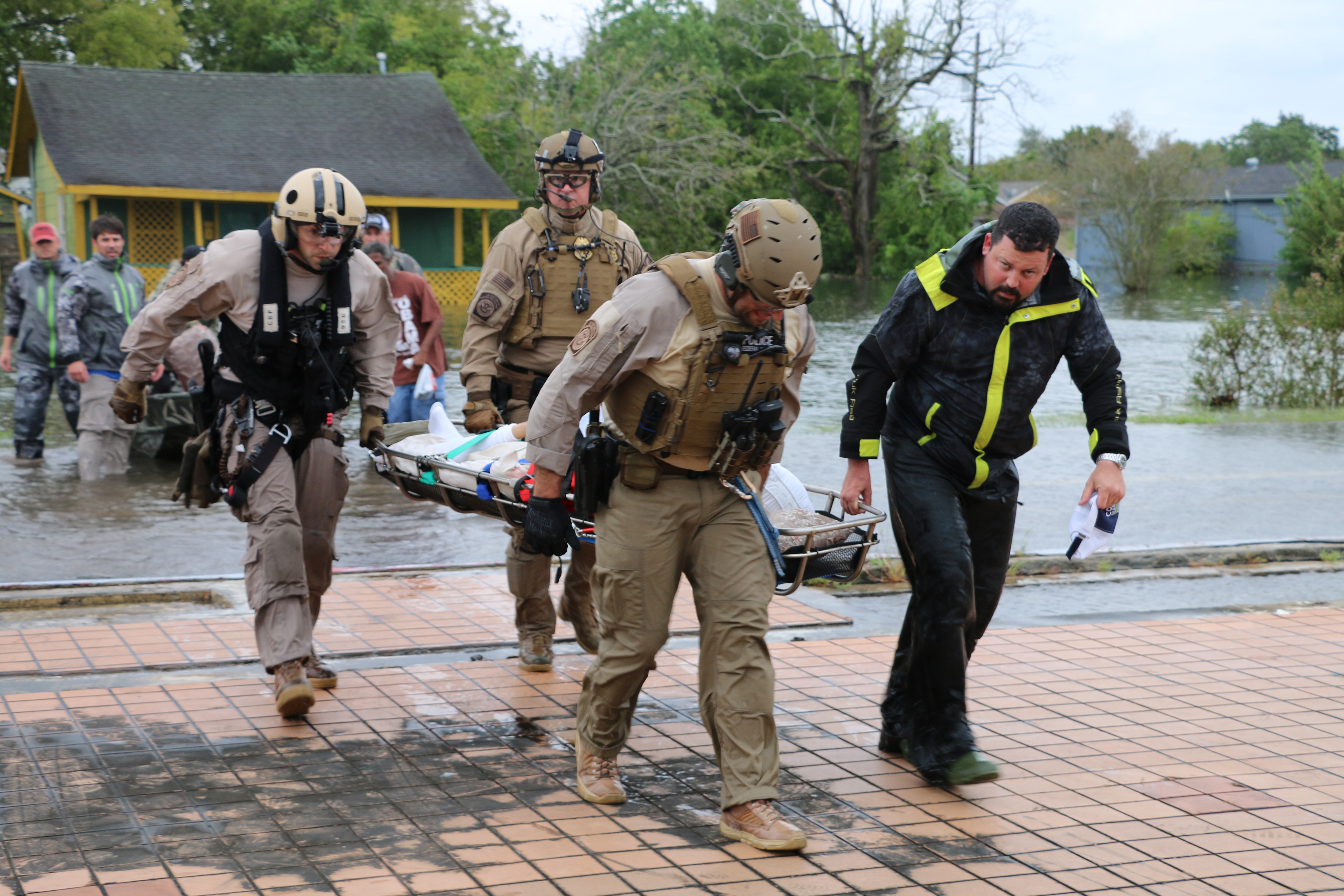
Hurricane Harvey in 2017 was the most destructive storm in Houston’s history. The storm caused flood damage, power outages, and transportation disruptions on a scale that the city had never seen before. Many funeral homes were forced to temporarily close. In addition to the physical damage and supply shortages, funeral professionals also faced an increased demand for their services due to the number of deaths resulting from the storm. Many worked around the clock to provide assistance to families in need, even in the face of these challenging conditions.
Funeral homes that had been impacted by Hurricane Harvey were supported by the entire profession as many associations rallied together to provide relief to fellow funeral directors. A Hurricane Harvey Funeral Directors’ Relief Fund was established by the Texas Funeral Directors Association and thousands of dollars were donated by funeral homes and funeral-related businesses.
One funeral home that really stepped up to the plate through all of this was the Crowder Funeral Home in Dickinson, TX, which provided refuge to more than 100 people who had escaped the rising floodwaters by boat. The funeral home even allowed people to bring their pets with them to take shelter as they waited to be evacuated.
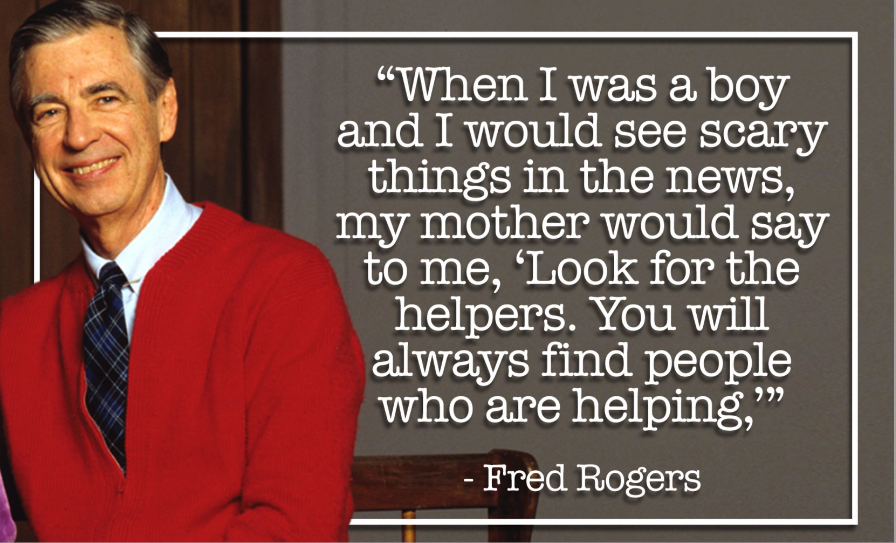
While this blog specifically examines Hurricane Sandy and Hurricane Harvey, there are many other examples of funeral professionals demonstrating heroism after a natural disaster. Whether in New Orleans after Katrina, in California after the wildfires, or in Missouri after the Joplin tornado, deathcare professionals can always be counted on to answer the call. Their essential work truly makes a difference in bringing dignity to the deceased and support to the families of victims.
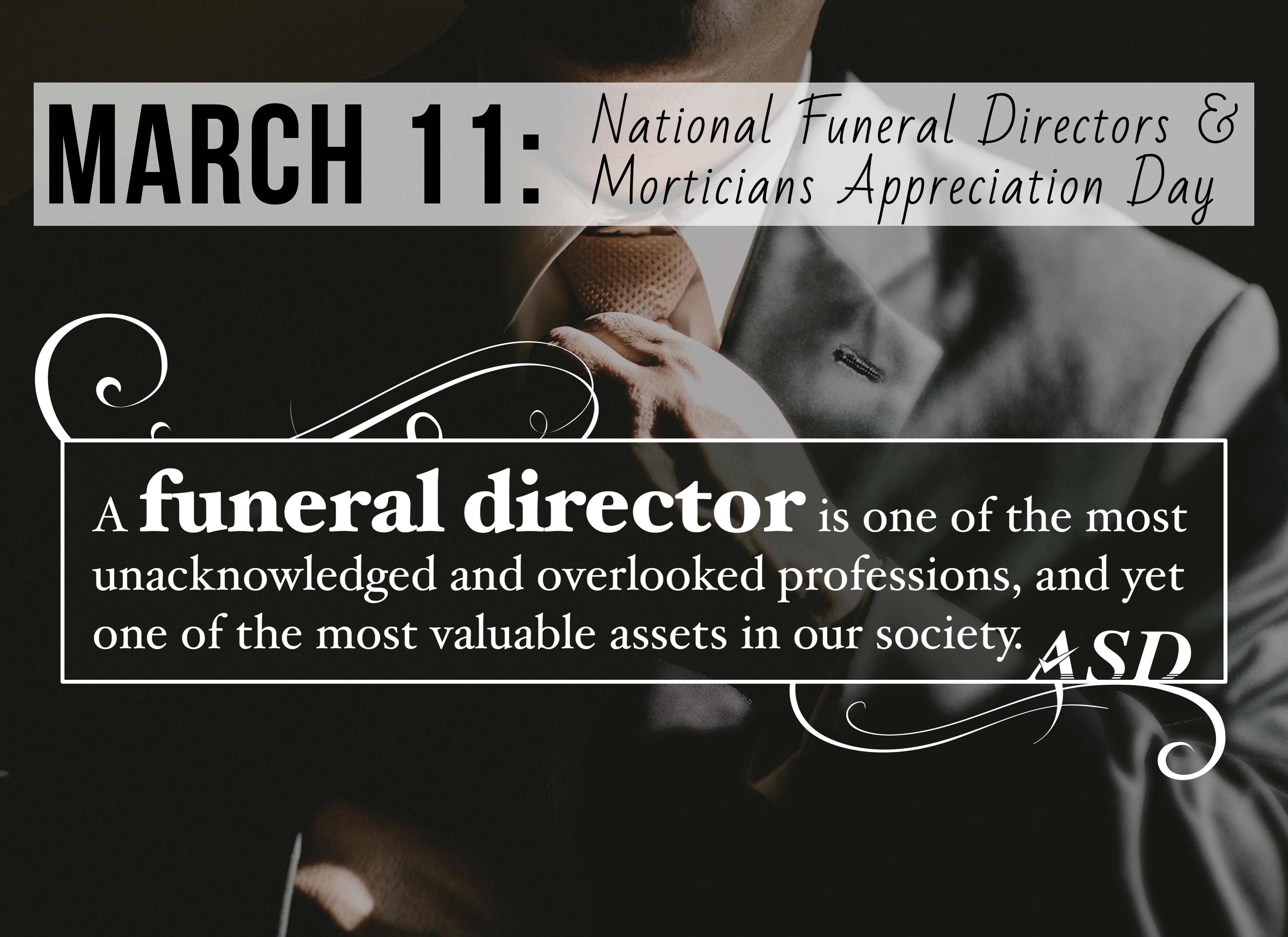
“Whereas these special men and women see their chosen profession as a higher calling, a sacred trust, in serving every family regardless of social standing, financial means, or time of day or day of the year, whenever a death occurs; and whereas March 11 would be an appropriate day to designate as National Funeral Director and Mortician Recognition Day to pay tribute to these funeral directors and morticians who, day in and day out, assist our Nation’s families in their times of sadness and grief and help families mourn a death and celebrate a life.” – H. RES. 892, passed by the 110th Congress of the United States.
On March 11, 2008, the 110th Congress of the United States passed a resolution designating March 11 as National Funeral Director and Mortician’s Recognition Day. This is a day to acknowledge the important work of funeral professionals and express support. This date in history is very significant because it represents the first time our government attached importance to the work of funeral professionals. The fact remains, even with a national day, funeral directors are largely unrecognized by our culture. Many people don’t consider the essential role of deathcare workers and how much society relies on them during times of crisis. It cannot be overstated how much bravery funeral professionals must possess in order to face some of life’s most horrific tragedies. They are heroes through and through and should be recognized as such.
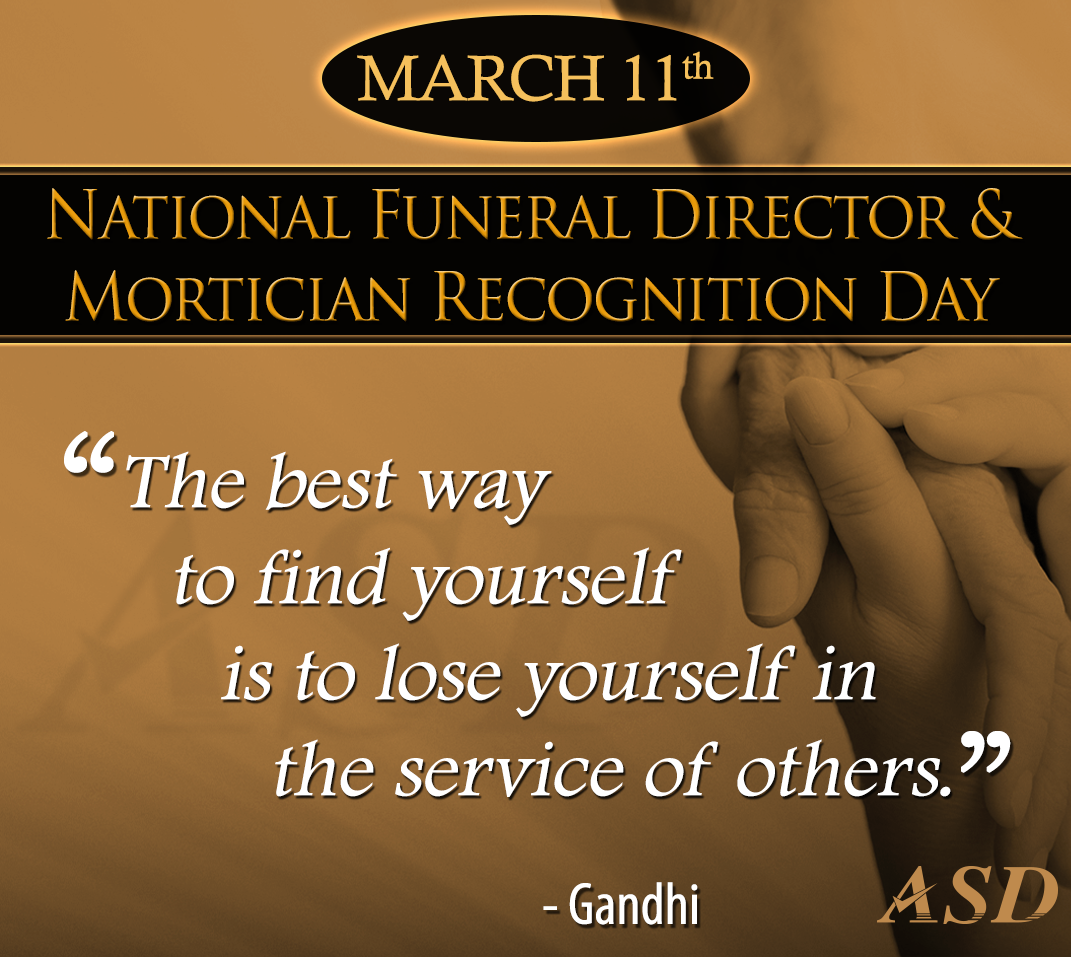
Related Reading
16 Character Traits that Define Funeral Service Professionals
30 Facts About Funeral Directors in Honor of National Funeral Directors Recognition Day
10 Reasons To Be Thankful for Funeral Directors
About The Author
Jess Farren (Fowler)
Jess Farren (Fowler) is a Public Relations Specialist and Staff Writer who has been a part of the ASD team since 2003. Jess manages ASD’s company blog and has been published in several funeral trade magazines. She has written articles on a variety of subjects including communication, business planning, technology, marketing and funeral trends. You can contact Jess directly at Jess@myASD.com
